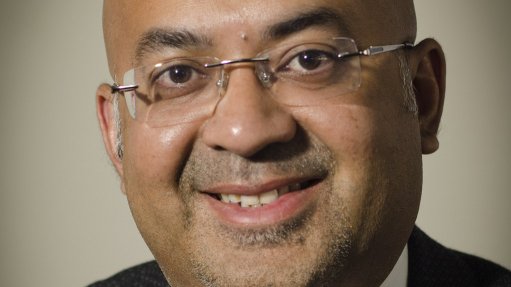
RUDRAJIT MITRA He has published widely in the field of rock mechanics and rock engineering, particularly focusing on underground coal mining
Photo by: Wits School of Mining Engineering
The University of the Witwatersrand (Wits) School of Mining Engineering has appointed Professor Rudrajit Mitra as Centennial chairperson of the school’s rock engineering department.
He joins Wits from the University of New South Wales, in Sydney, Australia, where he was director of undergraduate studies in the School of Mining Engineering since 2012.
Mitra highlights the importance of rock engineering in South Africa’s demanding deep-level and other underground mining conditions and emphasises the role of innovative technological solutions from a range of disciplines in improving safety and pro- ductivity in the sector.
“Building on the progress made by previous incumbents in this position, there is great scope to use the experience of other countries and various disciplines, such as computer science, geophysics, metal- lurgy, chemistry and finance, to collaboratively develop solutions,” he states.
Previous holders of the chairpersonship include well-known local experts in the field, such as Professor Dick Stacey and Professor Nielen van der Merwe. Wits School of Mining Engineering head Professor Cuthbert Musingwini notes that the chairperson position had been vacant for two years before the appointment of Mitra, as the department needed to ensure it appointed the right person to the position.
The chairperson is supported by the Centennial Trust, established by the school in its centenary year, 1996. The research activities of the chairperson are supported by a 2014 donation of R1.9-million by gold mining company Gold Fields.
Mitra earned his first degree in mining engineering from BE College, in Shibpur, India, and went on to complete an MSc degree in mining engineering at Pennsylvania State University, in the US, and a doctorate at the Virginia Polytechnic Institute and State University, also in the US.
He has published widely in the field of rock mechanics and rock engineering, focusing on underground coal mining. Mitra has a particular interest in visualisation technology and simulation and was the cofounder of the ‘Future Mining’ conference that promotes innovation in mining and focuses on lessons and opportunities from other industries.
The initiative is a forum for scientists, mine management, engineers, government, academics and other stakeholders to visualise and work towards positive future scenarios for mining.
Mitra also co-developed ViMINE, a scenario-based mine planning tool that helps mining engineering students to experience various aspects of a mining operation, integrating several types of simulation into one environment.
He notes that, in the teaching environment, this is a practical way for students to learn the complexity of mining systems, and not just mining methods but all aspects of a mining scenario, from financial management to commodity price fluctuations. “It is also a decision-making tool that [considers] the range of elements in mine feasibility,” Mitra adds.
He says that modern technology is supporting the global drive towards zero harm in the mining environment and has the potential to transform the sector by moving people progressively away from dangerous areas of high energy underground. Mitra also mentions that the trend towards mechanisation and automation will need to be balanced with the reskilling of miners to allow deployment to higher levels of activity.
“Universities have a vital role to play in advancing our rock engineering knowledge and practice, in both the research and development of safer ways to mine and opening the minds of students to the power of technology and systems to change mining for the better,” he concludes.